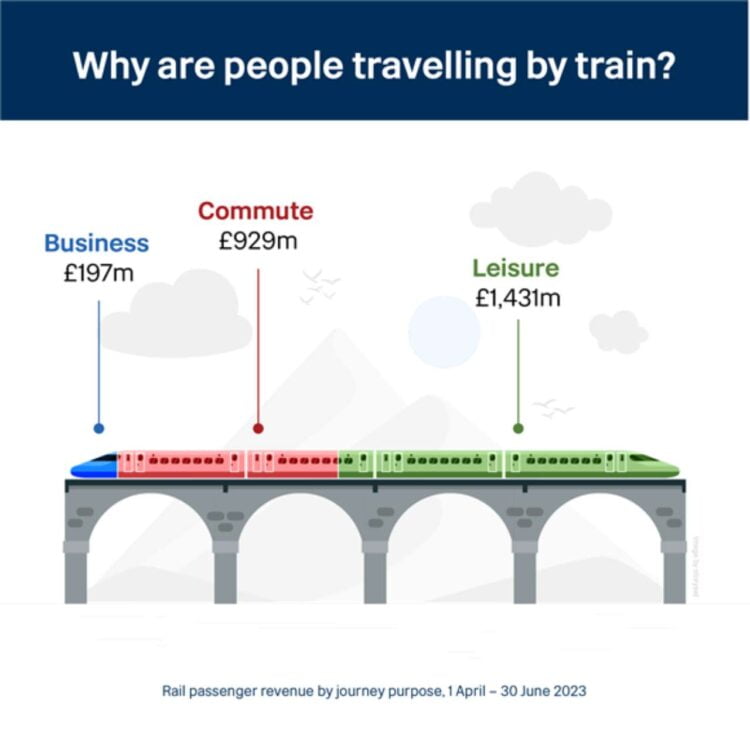The Great British Railways Transition Team has today published figures that show that an increase in leisure travel has boosted quarterly rail revenue by £295 million.
The statistics show that revenue from leisure travel grew by one fifth (19%) quarter-on-quarter. They also show an increase of 6% in commuting, and a rise in business travel revenues of 8% in the second quarter of this year (April-June 2023). More people are travelling to their workplace on more days, as working from home arrangements introduced during the Covid pandemic are rebalanced towards hybrid working or full return tot he workplace.
The amount of revenue from each travel type between 1 April and 30 June 2023 was:
- business: £197m
- commuting: £929m
- leisure: £1,431m

Commenting on the figures Darren Caplan, Chief Executive of the Railway Industry Association, said: “These hugely encouraging GBRTT numbers are further evidence that passengers are returning to the railway in a big way.
“It’s a reminder that as a country we must not take our foot off the pedal of rail investment, and that we need to think about future demand today by planning capacity for tomorrow. Rail growth, both now and in the decades ahead, can only be achieved by a reformed railway alongside a long-term plan with a visible pipeline for rail suppliers. Ultimately this benefits customers – both rail and freight – as well as the public purse, which gets better value for money as we seek to develop world-class rail infrastructure and rolling stock in the months and years ahead.”






Responses
Clearly, leisure travel has led the comeback. With the delivery of the promised up levelling of the rail services in the North, would the footfall be greater, e.g., on a West Yorkshire Metro?